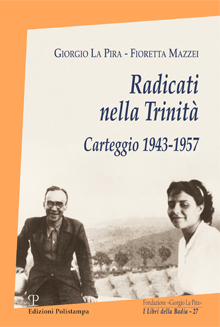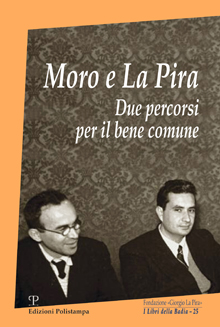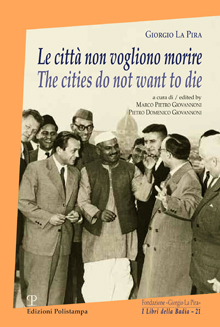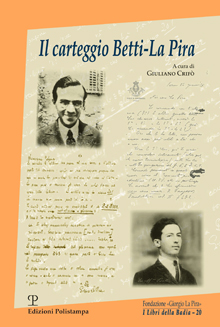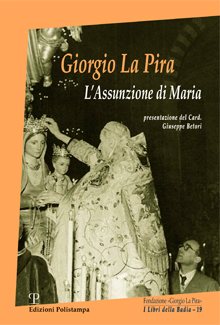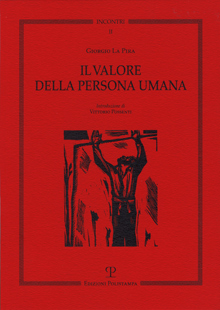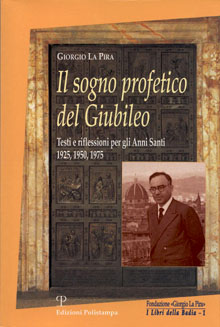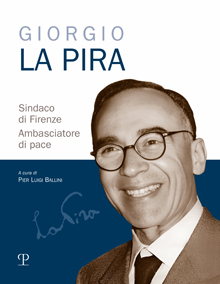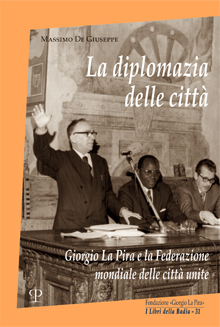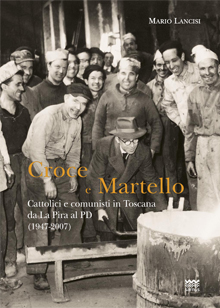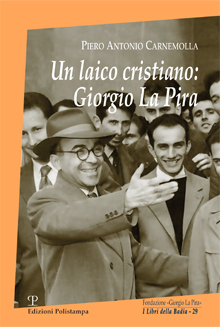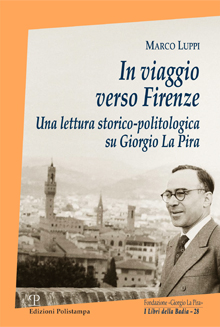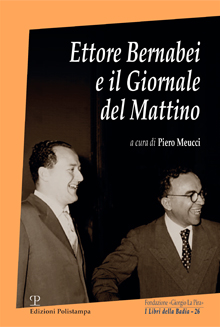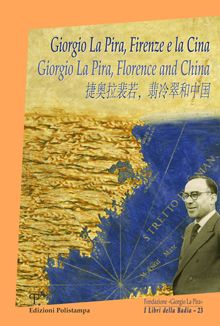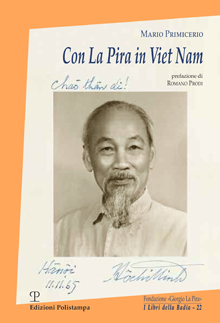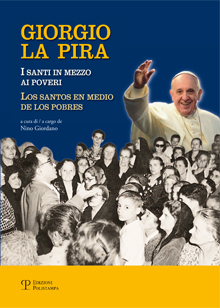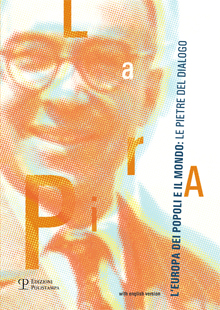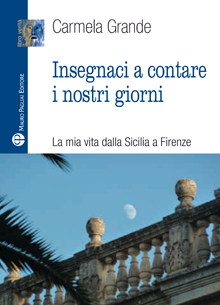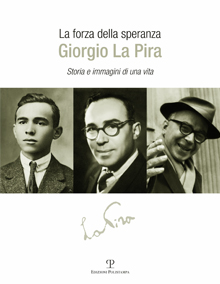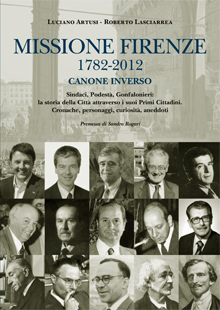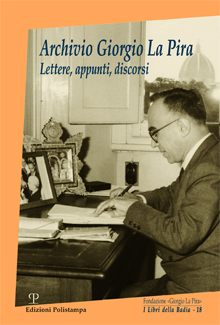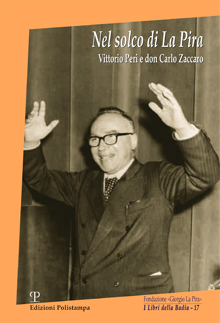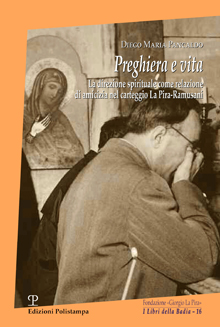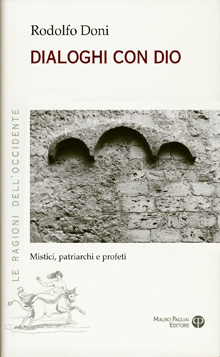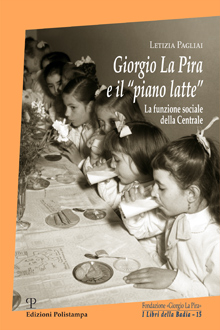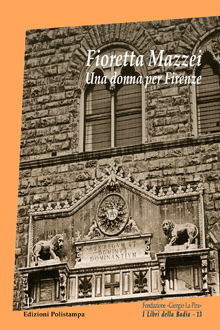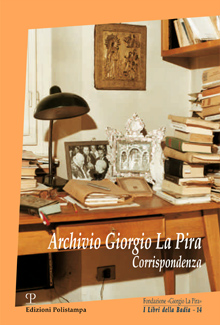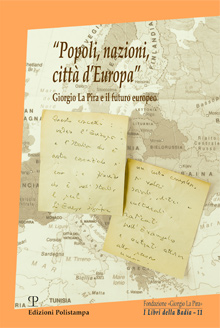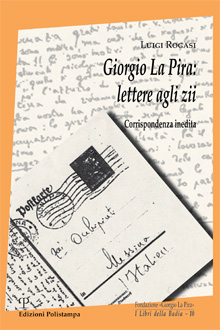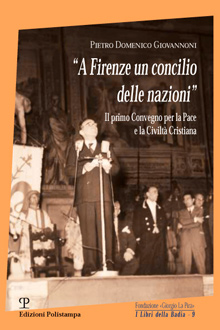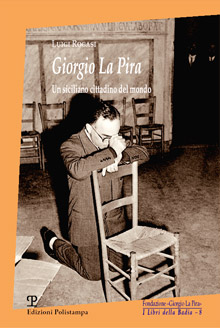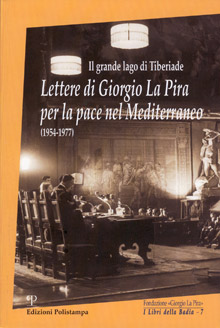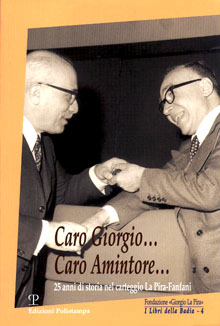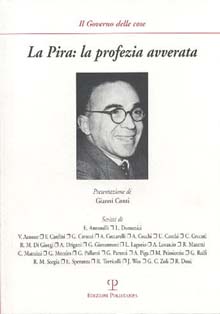Ricerca Veloce
Ricerca Avanzata
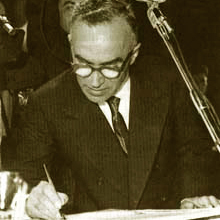
Giorgio La Pira
Ci sono stati tempi in cui Giorgio La Pira e la sua azione suscitavano le reazioni più diverse: dalla sorpresa ammirata degli uni all’odio degli altri. È il destino quasi inevitabile degli uomini che vedono più lontano degli altri, che pensano più profondamente degli altri, che agiscono in maniera inusuale, in modo da sorprendere gli interlocutori. È importante che oggi La Pira abbia molti più amici di quanti ne aveva nella sua vita terrena. E ciò si capisce: è il verdetto della storia che ha confermato la bontà e la giustezza delle sue scelte di fondo. (Mikhail Gorbaciov)
Giorgio La Pira nasce a Pozzallo (Ragusa) il 9 gennaio 1904 da un’umile famiglia. Laureatosi in Giurisprudenza si trasferisce a Firenze, dove nel 1934 ottiene la cattedra di Diritto romano e fonda la Messa di San Procolo per l’assistenza spirituale e materiale dei poveri. Tra il 1929 ed il 1939 svolge un’intensa attività di studioso che lo mette in contatto con l’Università Cattolica di Milano: entra in amicizia con figure come padre Gemelli e Giuseppe Lazzati. Nel 1939, alla vigilia della guerra, fonda e dirige «Principi», rivista antifascista che difende il valore della persona umana e della libertà e pone le premesse cristiane per un’autentica democrazia. Il regime la sopprime l’anno seguente. Il 23 settembre 1943 sfugge alla polizia segreta che lo cerca per arrestarlo. Si nasconde prima nei dintorni di Siena e poi a Roma, nel 1944. Liberata Firenze l’11 agosto 1944, La Pira torna ad insegnare all’Università. Nel frattempo arricchisce il suo pensiero approfondendo la cultura cattolica francese e l’economia anglosassone. Nel 1946 viene eletto Deputato alla Costituente. Formula con Moro, Dossetti, Basso e Calamandrei i principi fondamentali della Costituzione della Repubblica affermando le libertà civili, religiose, il diritto universale al lavoro, il valore dell’uomo. Nel 1948 è nominato sottosegretario al Ministero del Lavoro; il 6 luglio 1951 è eletto Sindaco di Firenze (1951-1958; 1961-1965). La sua opera di sindaco è punteggiata da notevoli realizzazioni amministrative e da straordinarie iniziative di carattere politico e sociale. Nel corso del suo primo mandato, lotta contro la disoccupazione; ricostruisce Firenze dalle macerie della guerra e fa costruire dei nuovi quartieri popolari; organizza gli incontri internazionali di Firenze: i Convegni per la pace e la civiltà cristiana, i Colloqui Mediterranei; il Convegno dei Sindaci delle Città Capitali del mondo. Dal 1966, anno in cui partecipa al restauro di Firenze alluvionata, comincia a ritirarsi dall’attività pubblica anche se resta forte il suo impegno per il disarmo, la pace e l’affermazione del primato dei valori umani e cristiani. Muore a Firenze il 5 novembre 1977. I suoi funerali suscitano una straordinaria commozione e una grande partecipazione nel popolo fiorentino. Paolo VI lo ricorda pubblicamente durante l’udienza del mercoledì 9 novembre.
È in corso la causa di beatificazione.
The son of a Sicilian packing-house worker, Giorgio La Pira (9 January 1904 – 5 November 1977) was born in Pozzallo (Sicily) to a family of modest means. His Catholic upbringing, especially the teachings of St. Francis of Assisi, played a big role in shaping his political and philosophical beliefs. He saw everything he did and every position he took as an expression of his spiritual beliefs. After studying accounting in Messina, La Pira received a law degree from the University of Florence in 1925. He became professor of Roman Law there in 1933. His openness helped him achieve a cordial relationship with his students. On the eve of World War II, La Pira founded the review «Principles», which promoted human rights and openly criticized fascism. During the war he continued his outspoken campaign against the fascists. After his offices were raided by the Italian police, La Pira escaped to Siena, then Rome. After the war, La Pira set about rebuilding Florence, which like most Italian cities at the time, was struggling to recover from the destructions of the war. As mayor he steered Florence away from the haphazard reconstruction typical of other Italian recovery efforts. He believed the focus of rebuilding should be self-sufficient neighborhoods. These neighborhoods centered around local shops, public gardens, markets, churches, schools, and tree-lined streets. The most well-known of these is “Isolotto” (little island). These revitalized neighborhoods became the heart and soul of post-war Florence and continue to thrive to this day. Additionally La Pira led the reconstruction of bridges, such as the Santa Trinita Bridge. Other public works projects included such job creating projects as the expansion of the water works, a waste system, and public transportation systems. At times La Pira took an even more active role in job creation. When Florence’s oldest industrial plant “Pignone” threatened to close due to a slump in demand, La Pira persuaded Enrico Mattei, President and CEO of the public energy conglomerate ENI to take it over, thus saving more than a thousand jobs. The company, later renamed “Nuovo Pignone”, is still in operation currently as a division of General Electric. La Pira was a Dominican tertiary, i.e. a lay member of the Dominican order, who took his Christian faith quite literally. In the years following the war, it was not uncommon to see him in public barefoot, having given away his shoes, clothing, and most of his salary. He was also active in national and international politics. In 1946 he was elected to the Italian Constitutional Assembly where he played a major role in drafting the Italian Constitution. Despite sometimes intense criticism, La Pira paid many visits to Moscow, China and even Hanoi, throughout the Cold War era. Until his death in 1977, La Pira promoted issues such as disarmament, the importance of third world development, and tolerance among world religions. In 1986, the Catholic Church began the process of Giorgio La Pira’s beatification.
Libri scritti da Giorgio La Pira
Radicati nella Trinità
- € 23,75
- € 25,00
Moro e La Pira
- € 22,80
- € 24,00
Unità della Chiesa, unità del mondo
- € 11,40
- € 12,00
Le città non vogliono morire / The cities do not want to die
- € 15,20
- € 16,00
Il carteggio Betti-La Pira
- € 26,60
- € 28,00
L’Assunzione di Maria
- € 12,75
- € 15,00
Il valore della persona umana
- € 10,20
- € 12,00
Il sogno profetico del Giubileo
- € 7,91
- € 9,30
Vedi anche...
«Bisogna smettere di armare il mondo»
- € 21,85
- € 23,00
Giorgio La Pira
- € 26,60
- € 28,00
La diplomazia delle città
- € 23,75
- € 25,00
Croce e martello
- € 11,40
- € 12,00
Un laico cristiano: Giorgio La Pira
- € 17,10
- € 18,00
In viaggio verso Firenze
- € 23,75
- € 25,00
Ettore Bernabei e il Giornale del Mattino
- € 17,10
- € 18,00
Con La Pira in Viet Nam
- € 17,10
- € 18,00
Giorgio La Pira
- € 11,40
- € 12,00
Insegnaci a contare i nostri giorni
- € 5,10
- € 6,00
Giorgio La Pira
- € 25,50
- € 30,00
Missione Firenze (1782-2012). Canone inverso
- € 17,00
- € 20,00
Archivio Giorgio La Pira
- € 33,15
- € 39,00
Nel solco di La Pira
- € 10,20
- € 12,00
Preghiera e vita
- € 21,08
- € 24,80
Dialoghi con Dio
- € 10,20
- € 12,00
Giorgio La Pira e il “piano latte”
- € 15,30
- € 18,00
Fioretta Mazzei
- € 10,20
- € 12,00
Archivio Giorgio La Pira
- € 33,15
- € 39,00
Per il bene comune
- € 13,60
- € 16,00
“Popoli, nazioni, città d’Europa”
- € 12,75
- € 15,00
Giorgio La Pira: lettere agli zii
- € 13,60
- € 16,00
“A Firenze un concilio delle nazioni”
- € 13,60
- € 16,00
Giorgio La Pira
- € 12,75
- € 15,00
Lettere di Giorgio La Pira per la pace nel Mediterraneo
- € 13,60
- € 16,00
Caro Giorgio… Caro Amintore…
- € 15,30
- € 18,00
Religioni e chiese a Firenze
- € 10,97
- € 12,91
Giorgio La Pira
- € 14,46
